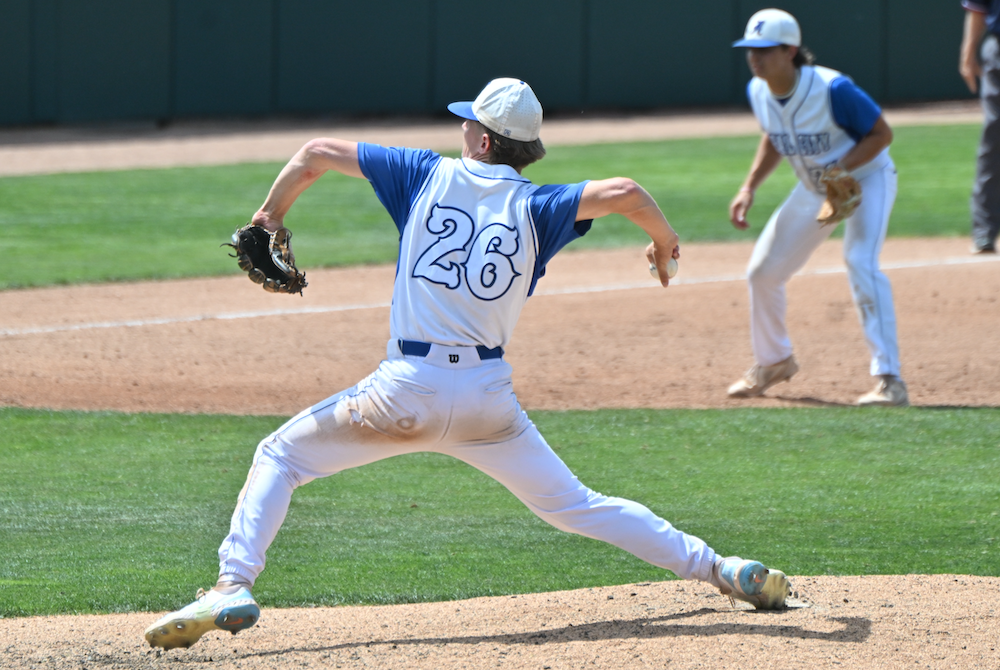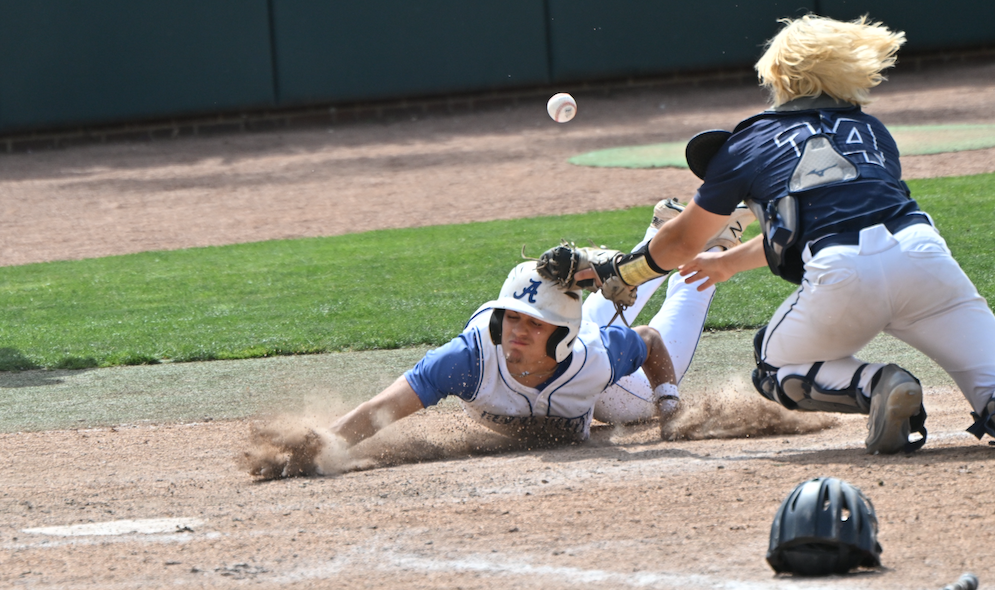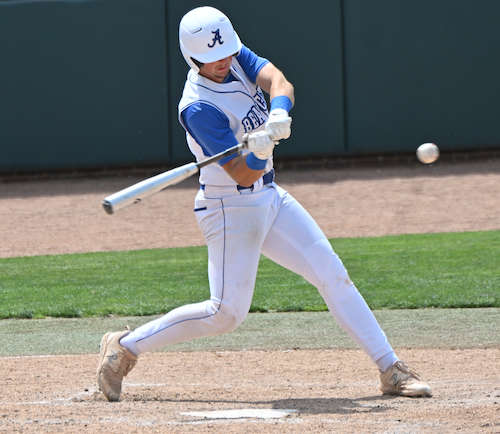
Keep on Coaching
February 1, 2013
By Geoff Kimmerly
Second Half editor
A few weeks ago, I finally got my first chance this season to watch a friend coach his basketball team. After guiding some others at the lower levels, this is his first time running the varsity – something he wasn't sure he wanted to do with a 1-year-old just learning to walk, but a challenge he ended up taking on to the benefit of all those involved.
Simply put, he’s good. I've seen a lot of teams and a lot of coaches over the past 15 years, and although I wouldn't know much of what to do if I were walking the sideline, I felt pretty qualified in telling him I was impressed – even if he didn't buy that I was offering an unbiased opinion. The best news is he’s gone from not sure about this a few months ago to talking about next season.
We know, at least anecdotally, that coaching continues to get more challenging. The time commitment has grown substantially to make running a program a year-round endeavor in a lot of sports at a lot of schools.
That commitment – especially for coaches with children of their own – was a main reason referred to in a New Haven Post-Chronicle story Saturday that noted 23 football coaching openings in Connecticut at one point this offseason. That state has 146 football teams – meaning roughly 15 percent will have new leaders this fall.
And that got me thinking about my friend, about how glad I am he’s given this a shot, and how I've seen so many others either not do so, or not stick around long despite having some pretty nice success.
A study published last winter in Interscholastic Athletic Administration magazine – a product of the National Interscholastic Athletic Administrators Association – noted some predictable results of a study that sought to determine the biggest challenges faced by first-year high school coaches.
The toughest according to the study was balancing the demands of coaching and teaching, experienced by nearly half the respondents – 98 percent of which coached high school teams and 81 percent of which are teachers.
The next six reasons all were noted by at least 30 percent of those in the study – personal fatigue, securing community support, securing and caring for facilities and equipment, parental contact, keeping non-starting players motivated, dealing with schedule interruptions and motivating athletes to achieve consistent, peak performance.
Nothing there is earth-shaking, and most if not all of these challenges are faced by high school coaches regardless of how long they've been in the field. But I got a little more perspective from some of the 32 items that ranked as least challenging to the first-year leaders – keeping in compliance with state and league regulations, dealing with substance abuse issues, teaching sport skills and creating a positive team atmosphere – things that seem most important, and yet appear to be easiest to do. I’m not sure what that tells us – but I think it tells us something.
Click to check out the entire three-page breakdown of the study, plus the researchers’ recommendations to remedy some of what first-year coaches face.
Giving back to Saginaw
I love reading about high-level athletes – like a star-studded group of alums from Saginaw – giving back to where they got their starts.
Pittsburgh Steelers star LaMarr Woodley made a big impact before the start of this school year by donating $60,000 to cover all participation fees for athletes in his former school district. The Saginaw News’ Hugh Bernreuter writes today about how Woodley (Saginaw High), the Philadelphia 76ers’ Jason Richardson (Saginaw Arthur Hill) and former Oakland Raiders standout Stu Schweigert (Saginaw Heritage) have combined to give more than $865,000 back to their home communities.
Bernreuter also mentions the non-monetary contributions of the Golden State Warriors’ Draymond Green (Saginaw High) and former Indianapolis Colts receiver Blair White (Saginaw Nouvel).
Click to read more about it.
Quote(s) of the Week
While rifling through more papers on my desk, I found an article from the Washington Post from Sept. 2011 titled “How high school sports save our schools.” I was drawn to it in part because I spent more than a decade in a newsroom, and it was a piece by a reporter covering education who instead of reporting on school boards and the like, delved into the importance of interscholastic athletics to education as a whole.
He spoke of how participation continues to grow even as resources dwindle, and of data supporting that extracurriculars like sports are more effective than academic classes in teaching leadership, teamwork, time management and “other skills crucial for success in the workplace.” Later, he mentioned a study noting that those who participate in extracurriculars earned more a decade later.
Click here to read the entre piece. These passages struck me most.
“Coaches might be the only faculty members still allowed by our culture and educational practice to get tough with students not making the proper effort. They have the advantage of teaching what are essentially elective non-credit courses. They can insist on standards of behavior that classroom teachers often cannot enforce because the stakes of dismissing or letting students drop their courses are too high. …
“Students do better in activities they choose. If we provide more of them, led by committed adults … that can make a difference. We know the bad news about education. Dropout rates are high. Achievement scores are stagnant. But sports participation is going up, despite pressure to cut it back. Let’s cheer about that and look for a way to draw in more students.”

Beal City Ace Closes Finals-Filled Career with Perfection in Repeat
By
Keith Dunlap
Special for MHSAA.com
June 15, 2024
EAST LANSING — Getting to pitch in a state championship game once is rare in itself. Doing so twice is even more improbable.
But three times during a career? Take a bow, Beal City senior Cayden Smith.
Two years ago, Smith pitched two innings of relief in a loss to Riverview Gabriel Richard. Last year, he allowed one run in a complete-game win over Plymouth Christian Academy.
Getting the ball again in a championship game Saturday, Smith saved the best for his last high school game and achieved something no pitcher had done before in a Final, throwing a perfect game in a 10-0 Beal City win over Norway that ended after five innings.
Smith, who will play for Central Michigan, struck out eight batters to earn his second-straight Finals win.
“Nerves are going to get to you every year,” Smith said. “It’s just who can overcome.”
 Smith did more than that in a performance that reduced Beal City head coach Brad Antcliff to tears of joy after the game when describing it.
Smith did more than that in a performance that reduced Beal City head coach Brad Antcliff to tears of joy after the game when describing it.
“That’s Cayden Smith,” Antcliff said. “The kid is a gamer. He wants the ball. He had all the command of his pitches today, and he pounded the zone. You have kids that have ‘it.’ I can’t tell you what ‘it’ is. But Cayden Smith has ‘it.’ He’s a bulldog.”
Beal City’s offense was also potent, starting when senior Jack Fussman singled home Smith for the first run in the bottom of the first inning.
Beal City (34-6) then grabbed a 2-0 lead in the second on an RBI single with two outs by junior Owen McKenny.
The Aggies kept the pressure on in the third, scoring four times to take a 6-0 lead. Senior Lane Gross hit a two-run double to the gap in right-center, and then Smith helped his own cause with a two-run double that made it 5-0 Beal City. A walk with the bases loaded gave the Aggies a 6-0 advantage.
In the sixth inning, Beal City took an 8-0 lead on a two-run single by Fussman, and then completed the game via the run-differential rule when a single up the middle by senior Josh Wilson ended up scoring two runs with a Norway throwing error to home.
 Fussman finished with four RBI for Beal City, which won its sixth Finals title in school history.
Fussman finished with four RBI for Beal City, which won its sixth Finals title in school history.
Even in defeat, Norway produced a terrific story.
The Knights (28-4-1) were attempting to become the first team from the Upper Peninsula to win a Finals title in baseball, and getting to the championship game was no small feat, especially after beating a team from the Catholic High School League, Marine City Cardinal Mooney, in a Semifinal.
But Norway simply ran into a buzzsaw in Smith and a Beal City team that was ranked No. 1 in the state for a reason.
“We’re going to cherish it forever,” Norway head coach Tony Adams said. “It was a heck of an accomplishment. We made school history, we made history for the Upper Peninsula, and today’s result isn’t going to diminish that. You can’t take that away.”
PHOTOS (Top) Beal City’s Cayden Smith (26) makes his move toward the plate during his team’s Division 4 championship win. (Middle) The Aggies' Jack Fussman gets under a throw home to score. (Below) A Beal City hitter lines up a pitch.

